Sun, Sea, and Shitloads of Sharks
Articles on this site contain affiliate links, meaning I may be compensated if you buy a product or service after clicking them. The full privacy & disclosure policy is here.It was 5am, and I was already sweating.
We’d just stepped off a plane from a very wintery Japan, straight into the heat of Cairns in midsummer. Two weeks of frozen fingers were already a distant memory as we cleared immigration and desperately looked for somewhere to change into shorts.
Far North Queensland was a new destination for both of us. I’d never been much north of Noosa, which despite being in the same state, lay a thousand miles to the south. Australia’s a big ol’ country.
Why Cairns? The cheap Jetstar flight from Osaka definitely helped, but mainly it was to check out the Great Barrier Reef. All the talk in recent years has been of coral bleaching and die-off due to warming oceans and stupid government decisions. If the stories were true, we wanted to visit the reef while there was still a reef to visit.
Everyone we talked to suggested that if you’re going to bother going out to the Great Barrier Reef at all, do it on a liveaboard dive boat. The most-damaged parts of the reef lie closer to the mainland, and that’s as far as the day trips go. If you want to see the best parts (and get a lot more diving in, of course), liveaboards are the only option.
If you believe the hype, the underwater experience on the Great Barrier Reef is about as good as it gets. I’ve dived a few dozen times over the years, but Lauren’s never put on a scuba tank in her life.
All of the liveaboard companies faithfully promised that snorkelers would have a great time as well, though. We figured that may or may not be true, but decided to take the risk and go see for ourselves.
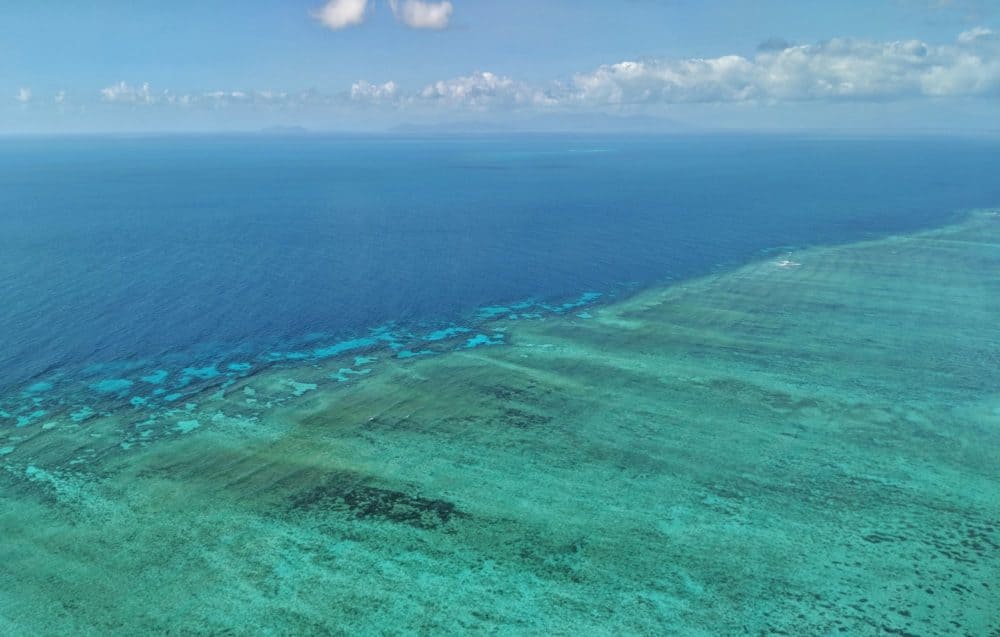
Most of the liveaboard companies operating out of Cairns offer fairly similar packages, although they’ll visit different locations on any given day based on the conditions. Prices don’t vary wildly either, although there is some difference between operators.
Reef Encounter was well-reviewed, at a reasonable price, and was able to rent out the extras were we after — a proper underwater camera and a dive mask with prescription lens. That was good enough for us. We booked and paid several weeks in advance since we knew when we’d be in town, but outside peak season there’s no need to be quite that organized.
A local travel agency handles the company’s bookings, so we wandered past it the day before to confirm everything was fine. It was, so all that was left was an early morning walk to the pier and getting ready for an underwater adventure!
Reef Encounter, like many other operators, shuttles liveaboard passengers to and from the mainland on its daytrip boat. That’s so that the bigger boat can stay around the outer reef and get more diving in. The day boat seemed fine for its purpose, but was pretty cramped and not particularly comfortable. Basically, it just confirmed we’d made the right choice opting for a liveaboard instead. Winning.
After a quick briefing and light breakfast, the trip out took around an hour and a half. Transferring to the Reef Encounter boat took all of about a minute, and boring logistical stuff like orientation and safety briefings was dealt with as quickly as possible. Let’s face it, everyone wanted to get in the water as quickly as possible.
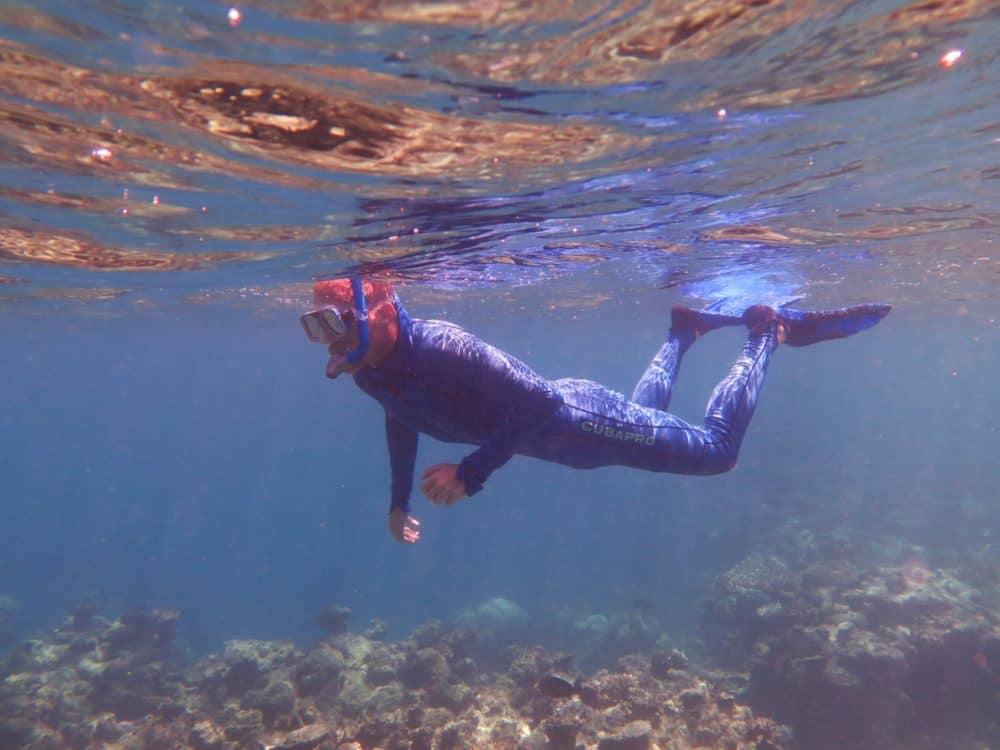
On a two-day package like the one we’d booked, you get four day dives, a night dive, and snorkeling sessions at the beginning and end. As a diver, it’s usually pretty hard for me to get excited about snorkeling anywhere, and that was true on the reef as well.
It’s not that it was bad — there was still plenty to see — but I just got frustrated being stuck near the surface when all the action was happening a dozen metres below me. Lauren, though, absolutely loved it — so if you’re a snorkeler/less of a snob than I am, don’t be put off.
After lunch and a dive briefing, it was time to awkwardly clamber into my stinger suit and gear. Can confirm: on a hot afternoon, there’s nothing like shuffling around the back of a dive boat in full gear with twenty other people to make you want to jump overboard immediately.
This was the first place I’d ever dived where a divemaster didn’t accompany you by default. In a country as highly-regulated as Australia, in a place where the company would call out search and rescue if you were ten minutes late coming back up to the surface, that was more than a little surprising.
You can pay an extra $15 AUD to have a divemaster guide you around, and since I hadn’t dived for a while, figured I’d do that for the first dive or two. In the end, I just paid for it on every dive — having someone else dealing with navigation and pointing out things of interest makes for a more enjoyable experience, at least for me, and was well worth the money.
Since I don’t own a good underwater camera, we’d hired one from the company for our time onboard for around $60/night. That’s not particularly cheap, but it’s cheaper than buying the official photos at the end, and more flexible as well. If you’re planning to do the same, don’t forget to take a USB stick with you to transfer the photos onto at the end of your liveaboard — the camera stays on the main boat.
Despite all the talk about damage to the reef, the marine biologist and other staff on the boat were still pretty upbeat about the health of the outer parts of it. I’d expected to see wastelands of bleached and dead coral, but while there were a few unhealthy-looking sections, most of the parts I saw still seemed to be faring pretty well.
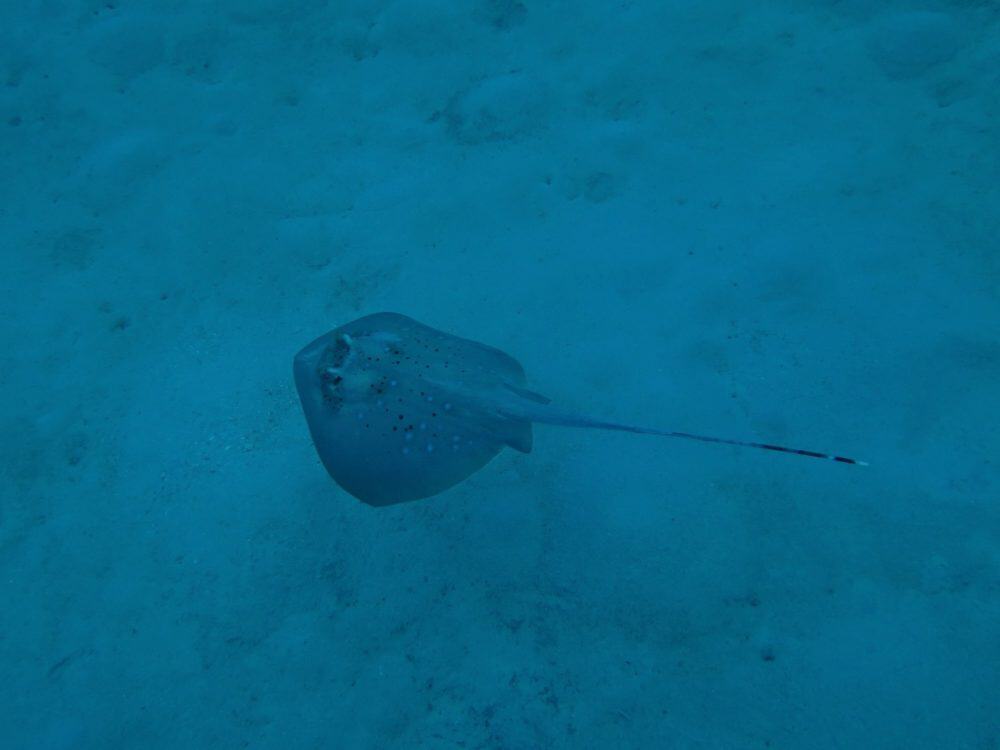
If this was the Great Barrier Reef struggling for survival, I can’t even imagine what a fully-healthy ecosystem looks like. On all of my dives, it was hard to know where to look. Schools of baitfish wheeled and swarmed around me, while colorful parrotfish crunched away on the corals.
Rays submerged themselves in the sandy ocean floor, quickly making their escape as soon as a diver got anywhere near them, while moray eels poked their heads out from under the rocks to see what all the fuss was about.
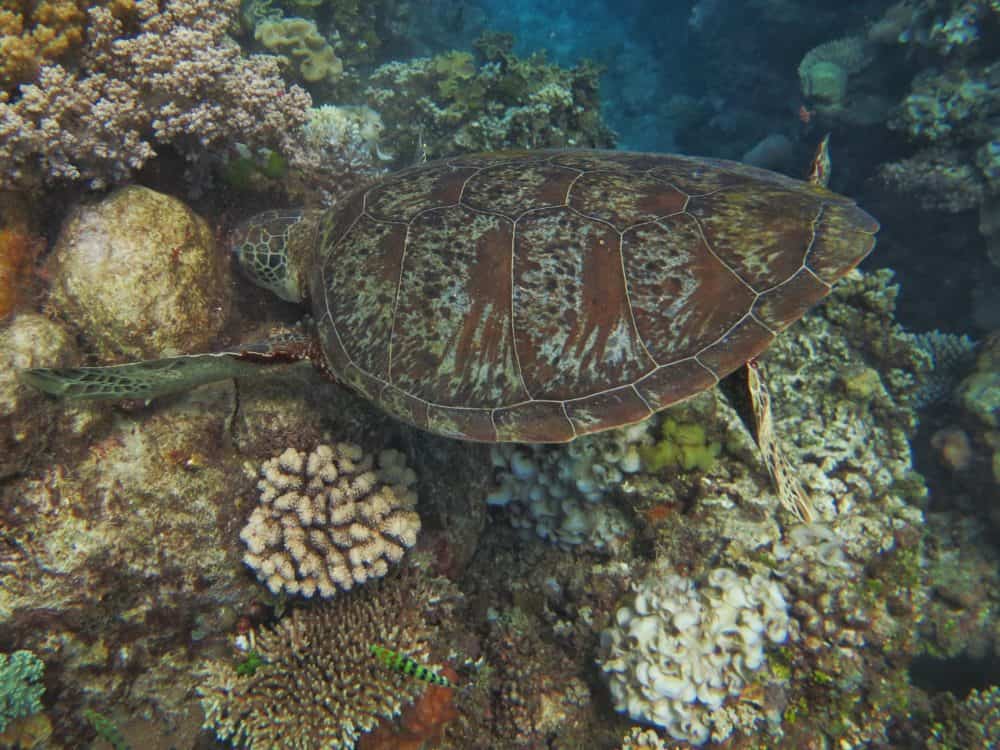
Timid reef sharks kept an eye on things from a distance, but the turtles paid us no attention whatsoever as they munched on tasty pieces of weed. The star of the show, though? That had to be Frank.
An enormous Napolean wrasse, Frank’s learned to recognise the sound of the dive boats and shows up to say hi most days. Much like a dog, these fish like to be patted and stroked, and Frank’s no exception — when he wasn’t getting enough attention as we did our safety stops, he even gave a couple of divers in my group a gentle nudge!
Long-lived and intelligent (at least for a fish), he made a point of coming up and eyeballing people — Napolean wrasse are known to form bonds with divers they recognise.
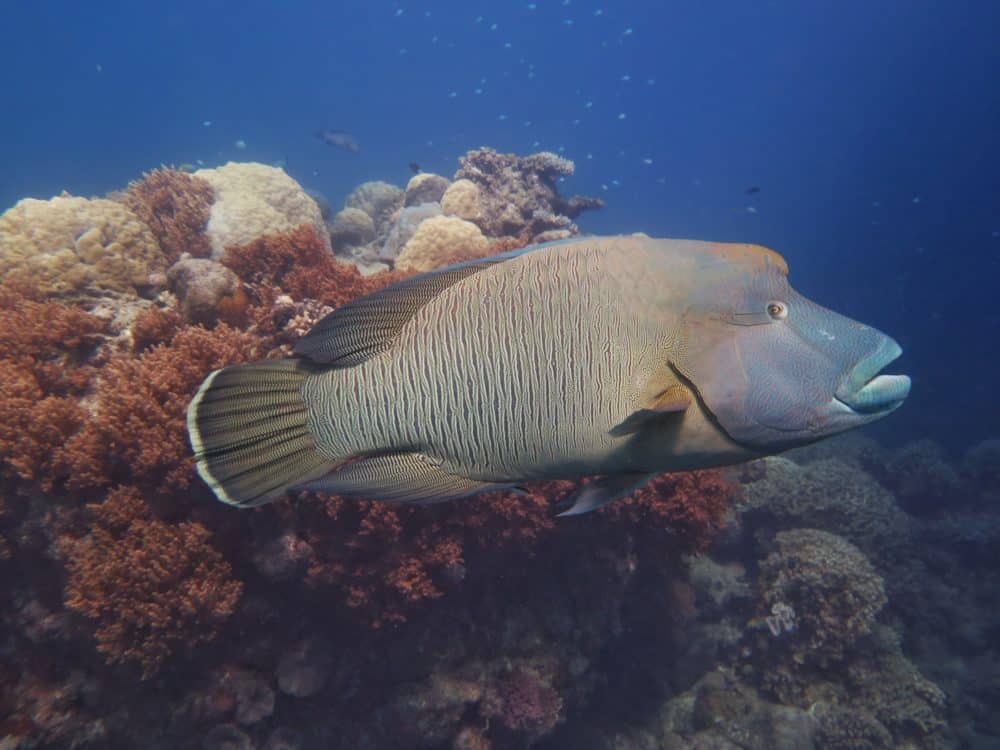
Yeah, Frank’s pretty great.
I thought that hanging out with him would be the highlight of the trip… but that was before night fell. I’d never done a night dive before, and I’d be lying if I said I wasn’t a bit concerned about it.
Knowing there were sharks (even of the harmless kind) and god knows what else swimming around in the inky blackness, and that I’d be joining them down there in a few minutes, raised my stress levels almost as much as learning that I wasn’t allowed any alcohol beforehand. I’m sure a large glass of wine would have done wonders for my nerves. And my co-ordination.
As it turned out, though, it was my favourite dive of all. There was no need to go far from the boat — as soon as we entered the water, we were surrounded by well over a dozen reef sharks and giant trevally, and they were all on the prowl. We quickly learned not to pick out smaller fish with the light from our torches, since it was signing their death warrant: as soon as one of the predators saw their prey lit up, it was a bloodbath.
Still, it made me understand why experienced divers so often rave about diving at night. It’s a totally different experience to doing it during the day, and the ocean feels like a very different place. More foreboding, sure, but with such a wide range of sea life that rarely come out when the sun’s out, it’s even more fascinating than usual.
It felt like we’d barely descended before it was time to go back up again, take a shower, and call it done for the day. At least that glass of wine was waiting.
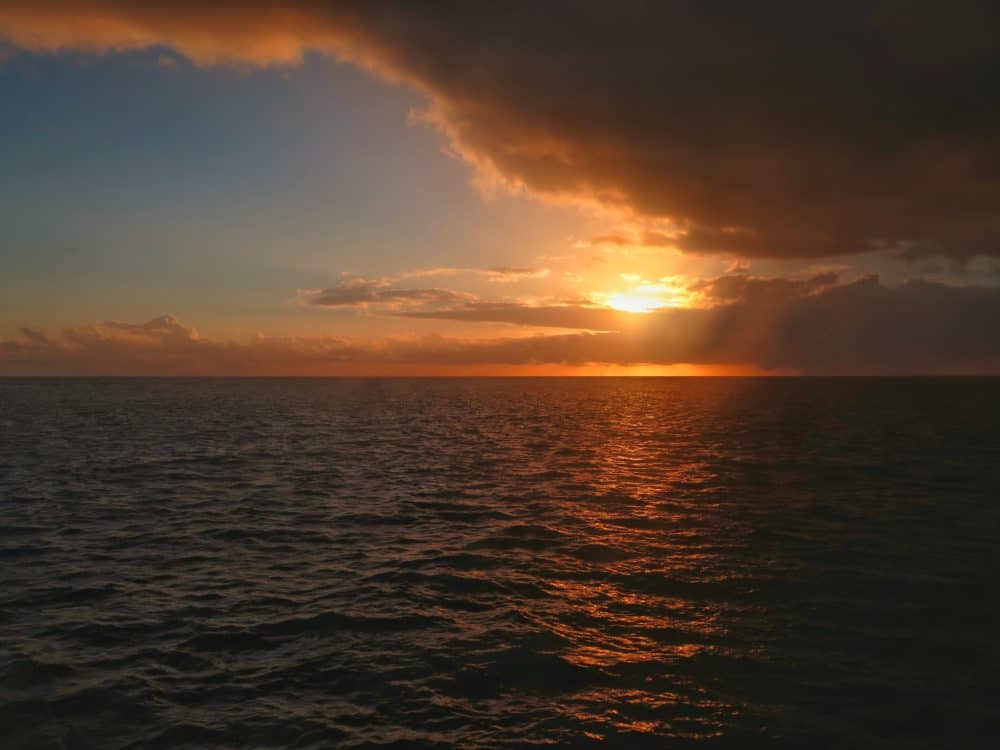
I wasn’t super-excited about the 6am wakeup call for the sunrise dive the next day, but two minutes in the water solved that problem. Turtles, rays, sharks, and more were all out doing their thing, and I could have stayed down there for hours. Or until my air ran out, at least. Some days I just wish I had gills.
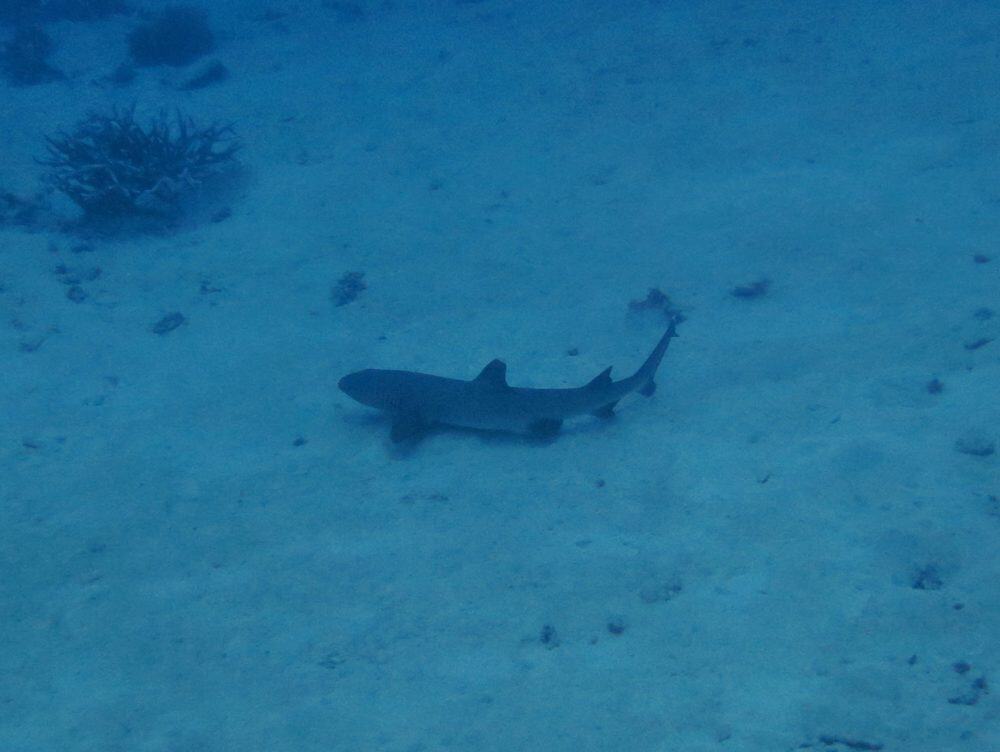
When we’d first arrived the day before, a few people had been lounging around in the boat’s saloon, snoozing on the sofas. We’d laughed about it at the time, but by late morning, after so much time in the water, I totally got it. Part of me wanted nothing more than to get back into the ocean again. Another part of me wanted a good, long nap.
Sadly, I wasn’t going to get either. After one final, delicious lunch, the day boat appeared back on the horizon, and this time we were the ones forlornly climbing back on board. Without all the anticipation and excitement, the trip back to Cairns seemed to take much longer than the ride out there. Even so, all too soon we were back within range of the city’s cell towers, and my phone started pinging with notifications again.
I glanced down at the growing number of icons, and reached for the power button. Emails, chat messages, and all the other crap could wait.
I was still thinking about Frank.
Was December a Good Time to Do It?
We were there in mid-December, which is slightly outside the July-November peak season for the Reef. Despite it officially being the start of the rainy season around them, conditions were excellent: great visibility on every dive, plenty to see under the waves, warm ocean temperatures and clear, sunny days.
Jellyfish were in very short supply as well — it’s also stinger season at that time, and we were strongly encouraged to wear full-body condoms stinger suits to ward them off, but I only saw one the entire time.
Most of the storms (and jellyfish) show up January through April in this part of the world, so I probably wouldn’t plan a dive trip much in advance at that time of year — but if you happen to be in the area and there’s a bit of a dry spell happening, it’d still be worth considering.
How Much Did It Cost?
My share of the costs for the two-day/one-night package was $670 AUD (~$475 USD). That covered transfers between the Cairns marina and the liveaboard boat, a double room for the night, meals and snacks (and a couple of drinks at the bar), five guided dives, plus wetsuit and camera hire.
Cheap? No. Worth it? Absolutely.
Was Two Days Long Enough?
With only a few days in Cairns, and costs for everything being high (it’s Australia, after all), we opted for the shortest two-day/ one-night package. If I was to do it again, I’d go for a two-night stay, costs be damned.
While I still got plenty of diving in, it kinda felt like I spent all of my above-water time either getting to the boat, settling in, packing up, or heading back to Cairns. Being able to wake up on the second day and know I didn’t have anywhere to go or anything to do that day except dive would have been wonderful.
If you’re a super-keen diver, and/or don’t have any particular time or budget restrictions, you can spend as long as you like out on the reef. Longer trips get proportionally cheaper per day, and you could probably negotiate something if you wanted to stay for a week or more.
What’s the Food Like?
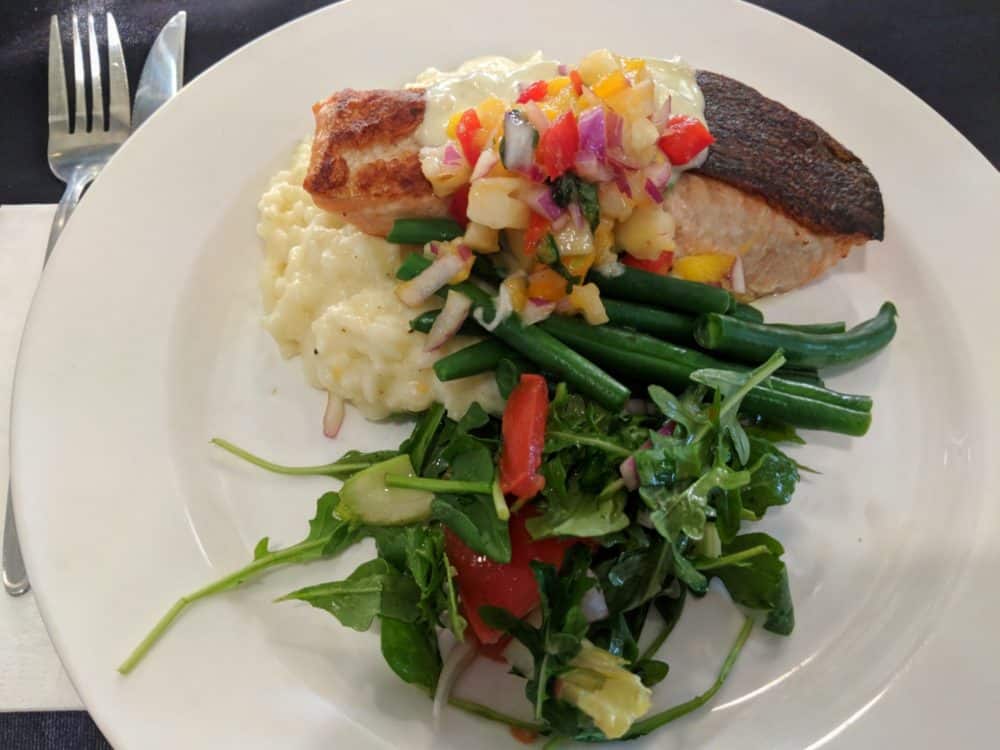
All meals were included in the price, and an unexpected highlight. I didn’t expect them to be particularly great when I was on a boat several miles offshore, but they really were.
The cook was happy to handle my annoying no-dairy restrictions (and most others), and the food was both plentiful and delicious, with several options for each meal, and plenty of fruit and other snacks between times.
Any Downsides?
My Great Barrier Reef liveaboard was an incredible experience, but there were still a couple of annoyances. Dives were only allowed to last a maximum of forty minutes (half an hour for the night dive), and with the threat of calling out the helicopters at your cost if you’re a bit late getting back to the surface, I wasn’t tempted to push the limits. Surfacing with close to half a tank of air remaining got a bit frustrating.
Things got a bit disorganised on the final day, too, with nowhere to store our dive and snorkel gear after having to clear it out of the lockers to make way for the next day’s guests. As a result, someone grabbed the special prescription mask we’d hired for Lauren, so she (and probably, they) couldn’t see anything during the final snorkel session.
Compared to how great everything else was, though, it’s very minor stuff, and I’d happily go on the same (or better still, a much longer) liveaboard with Reef Encounter again in a heartbeat. I can’t really ask much more than that.
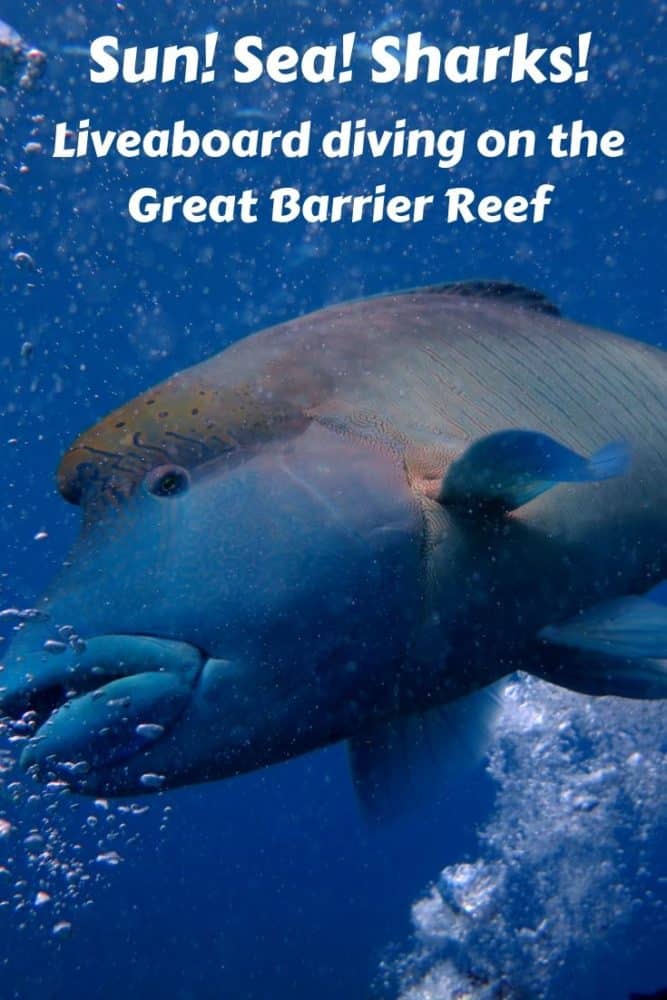

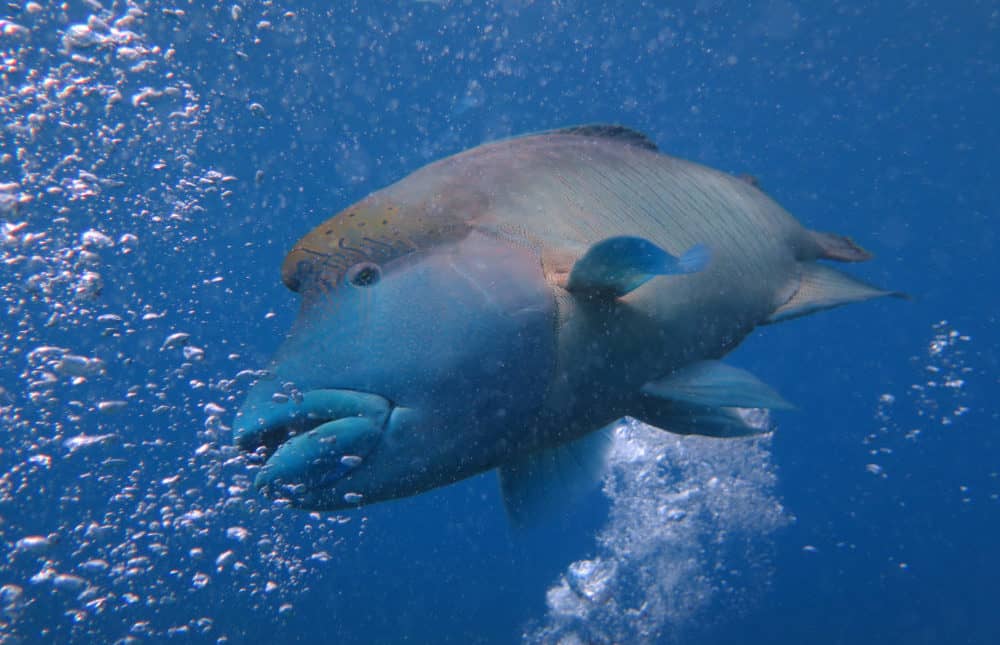
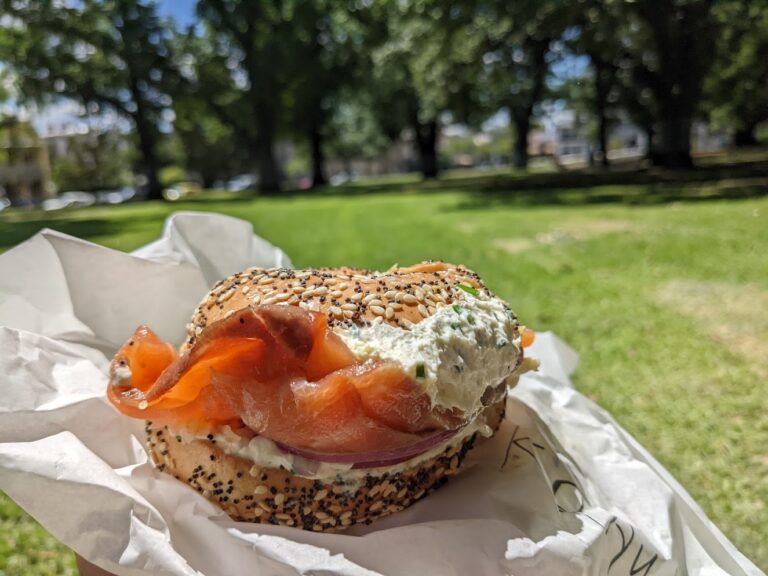
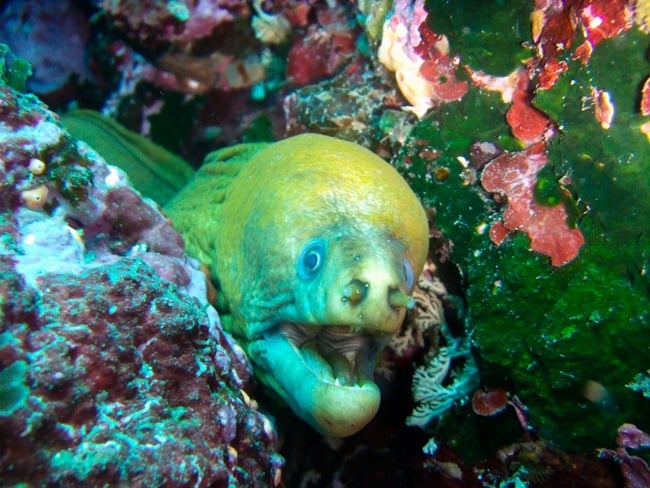
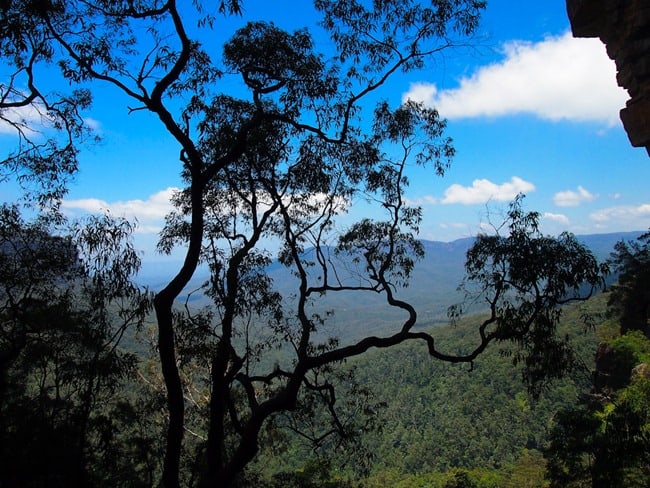
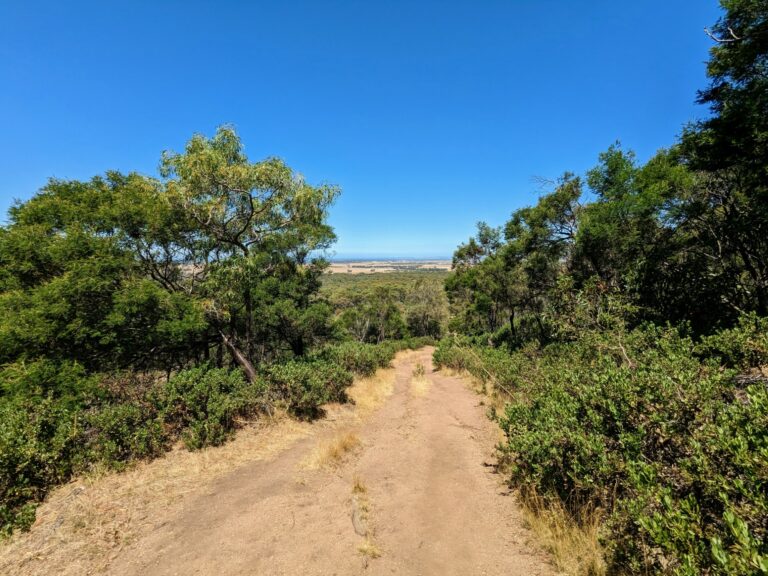
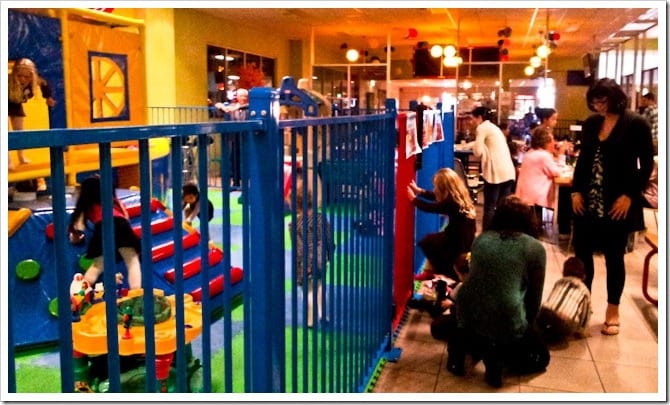
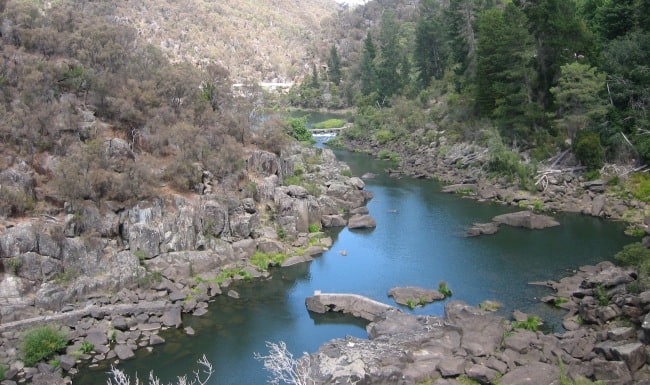
Loved the article Dave. I just became scuba certified and am going on my 1st Dive trip soon. I hope to do a liveaboard on the Great Barrier Reef someday as well. Your experience confirms that it will be a great adventure down under!